The
postage stamps of the first Lombardy-Venetia issue have been printed using
stock of papers different both for manufacturing system as for paper quality.
The first differentiating element is the HANDMADE type versus the MACHINE
made type. Between the various details characterizing the two different types
of paper (analyzed also in other "Going Deep...") there is
also the presence of the watermark for the handmade paper. The machine made
paper does not have any watermark.
The watermark is constituted by the capital letters "KKHM",
laid in vertical, initials of "Kaiserlich Koenigliches Handels Ministerium"that
in Italian language sounds like "Imperial Regio Ministero del Commercio"
(Royal Imperial Department of Commerce). I show here below how the watermark
was positioned in the sheet (Fig. 1) and two samples that show it in
evident way (Fig. 2 e 3).
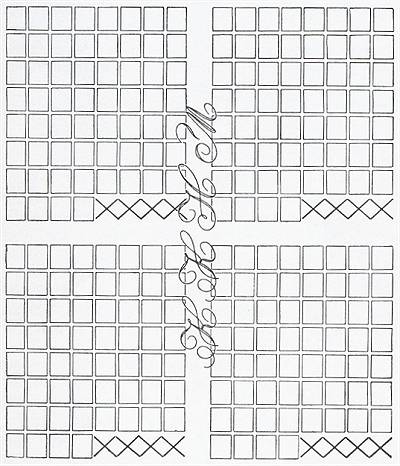
Fig.
1: one out of the possible placement of the watermark
(From the "Ferchenbauer"catalog, ed. 2000)
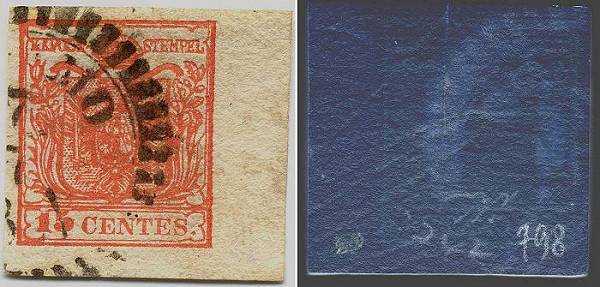
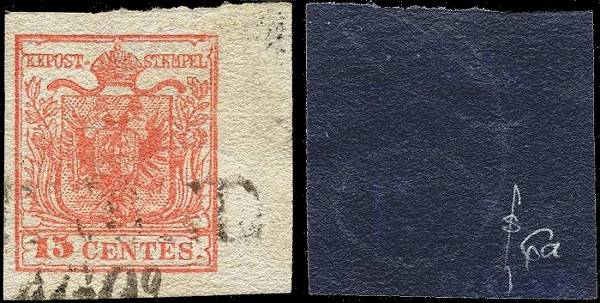
Fig.
2/3: two 15 centesimi with wide right interspacing, showing significant
parts of the watermark.
The watermark is visible in the negative picture at right under the shape
of some oblique lines and curves
By looking at the sheet reproduction (Fig. 1) it's immediately apparent
how the watermark can be present only in few samples inside the sheet itself,
that are therefore more valued than the others specially if the visible part
of the watermark is large as in the two samples represented. The samples with
watermark are usually 4-5 for each quarter sheet, comprehending also the S.
Andrew Crosses (very appreciated with this characteristic) and therefore they
are around 6% of the pieces present in a 240 samples sheet.
By reading the important Provera studies on the Lombardy-Venetia postage stamps
we can understand how the watermark placement was not always the same but
it can be found placed differently on the sheet. In addition the "quantity'
of watermark present in the stamps is usually more in the pieces coming from
sheet with wide spacing (and therefore with central narrow interspacing) than
in those coming from sheets with narrow spacing (and therefore with wide central
interspacing). For more details on the stamps spacing, please check the related
"Going Deep".
Here is the list of how the watermark can present itself in relationship with
both the placement in the sheet as well as the spacing type of the stamps
(Fig. 4 and 5):
SHEETS WITH NARROW SPACING (wide interspacing)
 |
 |
 |
 |
|
Fig.
4: possible watermark positions in the sheet (from left)
1) from bottom to top 2) from bottom to top, mirrored 3) from top to bottom 4) from top to bottom, mirrored |
|||
SHEETS
WITH WIDE SPACING (narrow interspacing)
 |
 |
 |
 |
|
Fig.
5: possible watermark positions in the sheet (from left)
1) from bottom to top 2) from bottom to top, mirrored 3) from top to bottom 4) from top to bottom, mirrored |
|||
Finally
I want to mention how often a great confusion is made in the description of
samples similar to the ones shown in fig 3 and 4, in fact they simply are
called "sheet borders". It is clear that they should be called
more correctly as "stamps with interspacing parts". But may
be I'm becoming too picky...
5th
ISSUE
The
stamps of the fifth issue too (see relative pages) have been printed on watermarked
paper.
The printing table was made by four groups of 100 pieces, two on top and two
at bottom. Horizontally, overlapping each of the two groups of 100 stamps
there was in the sheet the watermark "BRIEF - MARKEN" written
in stick characters, with letters tall around 2.5 cm, that means the same
height of the stamps itself (Fig. 6).
![]()
Fig. 6: the watermark of the 5th issue (approximate)
(ftom "Catalogo Unificato" ed. 1979)
The stamps involved with the watermark are usually the ones of the 5th, 6th
and 7th horizontal row: the number of pieces involved varies quite a lot depending
on the position of the watermark in the sheet: they can be from 5/6 to 15/20
(a letter of the word can be contained exactly in a single piece or be shared
between 4 stamps...) and therefore from 5% to 20% for each quarter sheet.
Very interesting and not common are the single samples showing a whole character.
I give here the representation of two pieces showing whole letters: a 5 soldi
showing the "K" (Fig. 7) and a 10 soldi showing the "R"
(Fig. 8).
Because the watermark is quite complex to be scanned, some effort is needed
to see it.....
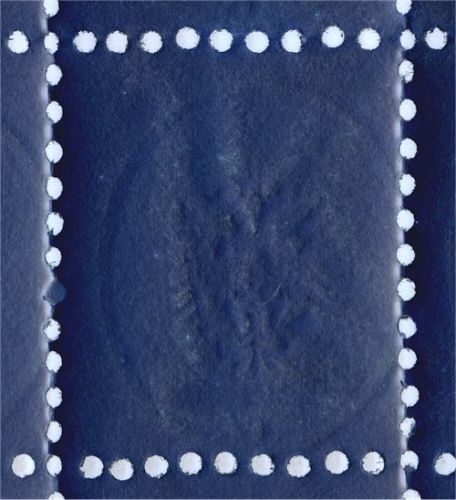
Fig.
7: "K" whole character
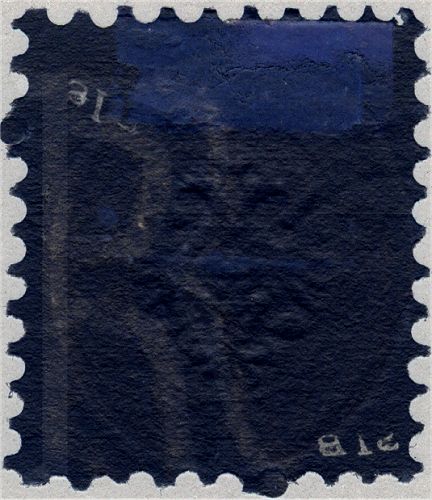
Fig.
8: "R" whole character
Other
issues
The
stamps of the 1st and 5th issues were the only "ordinary"
pieces of the Lombardy-Veneto to be printed on watermarked paper.
Nevertheless some stamps and newspaper revenues were run on watermarked paper;
it's the newspaper stamps called "Small eagle" and the newspaper
red revenue of 2 Kr (see the relative cards for the details on the stamps).
In the first case ("Small Eagle") the watermark is composed
by the label "ZEITUNGS - MARKEN" in stick characters tall
around 2.5 cm. and positioned horizontally in the sheet, overlapping each
double horizontal group of 100 pieces (Fig. 9); it is found starting
June 1864 while the samples printed from July 1st 1863 to 31st May 1864 do
not carry it.
![]()
Fig. 9: the watermark in the newspaper stamps (approximate)
(from "Catalogo Unificato" ed. 1979)
Even
in the 2 KR red the watermark is composed by the label "ZEITUNGS -
MARKEN" in stick characters tall around 2.5 cm. and positioned horizontally
in the sheet as in the previous (Fig. 9) and in this case too it can
be found starting June 1864 while the samples previously printed were without
it.
In both cases the pieces with whole watermark characters are very interesting
and in demand.